Shin Megami Tensei: Devil Summoner: Soul Hackers: The Review
Fifteen years and a million colons later…
About the Game
Genre: RPG
Mode: Single-player
Rating: M for Masochistic… I mean, Mature
Developer: Atlus
Publisher Atlus
Platforms + Release Dates:
– Sega Saturn: November 13, 1997 (Japan)
– PlayStation: April 8, 1999 (Japan)
– Nintendo 3DS: August 30, 2012 (Japan); April 16, 2013 (North America)
—
Note: I’ve never played any of the Devil Summoner games, so this review is coming from the perspective of a complete newbie to the series. With that, let’s get started.
A City Reborn
“Five years ago, the ‘Urban Modernization Project’ proposed by the government completely changed the face of this sleepy country town. This was the rebirth of Amami City as a new ‘cyber-metropolis,’ a city completely connected with its own online network.”
As the intro text so eloquently put it, Amami City is a cyberpunk metropolis at the forefront of the information age. Everyone gets a free PC, and everything is connected to the city’s high-speed network–the perfect place for hackers to thrive. And thrive they do.
Atlus must’ve made a contract with some writing demons because this shit is amazing.
It seems that even in 1997, Atlus had godly writing chops. Soul Hackers is the classic story of the right guy at the right time that escalates to cataclysmic levels, but with that high-level Atlus polish. They take a familiar formula and just execute it so perfectly.
I’ve played many Atlus-developed games before including Persona 3 + FES, P3P, Persona 4, P4 Golden, P4 Arena, Devil Survivor 2, and Catherine, so I figured I knew all of Atlus’s writing tricks and whatnot, but NOPE. Despite knowing Atlus’s penchant for twists, I was lulled into a false sense of security with Soul Hackers’ very steady progression before BAM!
Seriously. Ten hours into the game, I was like, “Oh man, everything’s going keikaku doori. This is way too predictable. Step up, Atlus.” But two minutes after a certain boss fight I was like, “OOOOOOOOOOOOOOH!” What a tweest! And the ending is just oh-so satisfying. I really shouldn’t’ve expected any less of Atlus.
The biggest “weakness” in the story is that it doesn’t have the same world-shattering urgency of the Persona or Devil Survivor games. The story is sort of like Persona 4 in that it is implied the threat within the city will eventually threaten the world, but it doesn’t have the same urgency of the murder mystery, sadly.
Oh, and this is normal for most RPGs, but I figured I’d mention this anyway: The major storytelling happens in between dungeon dives, so expect one to two hour droughts while you’re clearing a dungeon.
How about some story specifics? Note: Spoilers from the first hour (out of 15 to 20 hours) or so.
>Chief storytelling methods.
It all begins with the MC (main character) and his childhood friend Hitomi hacking a terminal to acquire access to the exclusive Paradigm X beta test. For those not in the know, Paradigm X is the in-universe version of Second Life, essentially, where users can connect to the eponymous virtual city and enjoy all kinds of entertainment. Everyone wants in, but access is decided via lottery. Luckily, that’s not a problem for an ace hacker such as the MC.
Afterward, they receive a call from Spooky, the leader of the “Spookies” hacker group, who asks them to meet up so he can show them a new piece of hardware he acquired from a junk dealer. It’s a PC that’s shaped like a gun, so he calls it a “gun-type PC.” (Great name.) Spooky figures it’s something important because he’s noticed some suspicious people following him around ever since he picked it up.
While they wait for Spooky to go talk with the dealer, the MC and Hitomi decide to mess around inside Paradigm X. There the MC encounters a wolf/fox spirit named “Kinap” who ominously warns the MC of the perils that await him. Kinap has the MC embark on Vision Quests to learn from those who have fallen. FORESHADOWING.
I don’t want to spoil the Vision Quest, so I’ll just skip a bit and say that the MC eventually does return from the Vision Quest to Hitomi’s relief. Apparently, while he was out, he was in a catatonic and lifeless state. Spooky! (Pun intended.)
Stuff happens, and the MC releases an amnesiac demon named Nemissa from the gun-type PC who possesses Hitomi. Now Nemissa and Hitomi share a body, and the MC can fight, control, fuse, and converse with demons. Shit happens, and the Spookies get involved with some conspiracy.
So, how about the gameplay?
“Excuse me?”
>Some gameplay pics.
Soul Hackers is a traditional RPG in a sense. You roam “dungeons” and randomly encounter enemies like the early Final Fantasy games. The combat is turn-based as well. You pick abilities before letting your character, Nemissa, your demons, and the enemy demons duke it out.
Like a traditional RPG, you’re also going to need to do a lot of buffing and debuffing to kill the bosses in this game. It’s really lame, though, that a lot of the demons with good buffs/debuffs are usually lower leveled than your main damage dealers and healers. Not to mention, a lot of the fights are more about preparation, not really skill.
It’s also untraditional at the same time. I haven’t played any other RPG that lets the player speak with demons and convert them to your cause. Persona and Soul Hackers both have fusions, but instead of Persona’s card system, Soul Hackers requires you to talk to demons to get them to join you.
During battle, you have an option to talk to the demons. Some demons are dicks and will never join you, others are greedy and want your hard-earned yen (used for buying weapons, armor, and usable items) or magnetite (magic money that fuels demon summoning, maintenance, healing, and so on), and others still are nice and will help you out of the goodness of their hearts. (Basically, just talk to demons and never give them your shit.)
A lot of the dialogue with demons is recycled, but every dungeon will add a couple new lines into a mix. It’s actually kind of cute to see Femme demons act flustered after you attempt to flirt with them or old demons pushing their way into your group because they think you could use their help.
If you already have a certain demon in your stock of usable demons, you can talk to the same type on the battlefield and see their reactions. Most of them will say something like, “Oh, you know what’s-his-name? I guess I’ll leave you alone,” and go away. Others may give you money or magnetite because they’ve heard good things from their friends. Femme demons will be like, “Oh goodness, I didn’t know you were going out with her!” before leaving. All of this adds a lot of personality to what would otherwise be plain sprites.
Speaking of personalities, demons actually have them as a stat, but they all just piss me off, really. The only two useful personalities are Kind, because Kind demons will heal and buff your team with no complaints, and Sly, because Sly demons won’t throw a bitch fit if you make them cast offensive (namely debuffing) magic. I get what Atlus wanted to do with this, but it’s just annoying trying to find demons that will cooperate. Demons do pitiful damage anyway and are primarily used to buff/heal your human characters and debuff the bosses.
And the dungeons? Every dungeon is a goddamn puzzle. Where’s “A l e x” when you need him? I didn’t think to check the Sega Saturn guides on GameFAQs, so I went through everything on my own. But honestly, they’re not too difficult; expect each dungeon to take one hour or so. At least the puzzles take your mind off the “kill enemies until you’re within the level range of the boss” formula, and the dungeons are very well integrated into the storyline.
As usual with older games, expect a lot of cheap deaths. You may get hit with bad RNG and a surprise attack that will just wipe you before your turn even starts. Good thing saving and loading are nearly instantaneous! (You can also adjust the difficulty or change setting settings with the gun-type PC.)
I also didn’t find the shop until I was like… four hours and three dungeons into the game, so that might’ve been the cause of some frustration.
There’s probably a bunch of stuff I’m missing, but those are the major gameplay features you probably want to know about.
How does it sound?
Shoji Meguro. That is all.
Okay, okay. The game features a J-rock and electronica-inspired soundtrack that’s really catchy. Sasuga Shoji Meguro.
I hope you guys pre-ordered the game or Atlus makes the whole soundtrack available somewhere because the uncompressed versions are just awesome. The actual in-game music and sounds are fuzzy, though, probably because of the 3DS hardware. Can’t really expect too much there.
The English voice cast is really good, too. I don’t want to list anyone besides Laura Bailey in case I’m wrong, but everyone sounds good and really adds to the experience. You’ll probably recognize almost everyone from some Funimation dub or another Atlus game.
Well, enough of that…
—
What I liked:
– Fantastic writing and characterization, as expected of Atlus.
– Catchy music, as expected of Shoji Meguro.
– Voice work brings out each character’s personality.
– Fast battles.
– Decent auto-battle function for your demon allies.
– Varied dungeons with cool puzzles keep things fresh.
– Dungeons are amazing and very relevant to the storyline.
– Talking with demons is an interesting and fun mechanic… except when they attack you.
– Extra dungeon for veterans.
– Super-fast loading and saving.
– When loading a save, you also get an option for a “Digest Mode” where you can rewatch scenes in the game. Really cool.
What I didn’t like:
– Demon personalities (the stat) are annoying to deal with.
– Instant deaths are annoying.
– Graphics are kinda meh, as expected of a Nintendo console.
– Gameplay emphasizes preparation over skill. Thus, it isn’t very difficult. It’s all about if you have the right demons or if you are at a high enough level.
– Stat level system is stupid. There is no choice: MC goes full strength, Nemissa goes full magic.
– UX stuff like no explanation for spells except for when you’re in battle. You better remember your –undas and –kajas!
—
TL;DR? Soul Hackers is a very good RPG. (8/10)
I listed a lot of stuff that bugged me, but overall, Soul Hackers is an excellent remake, only hindered by design choices made 15 years ago. Everything else is peachy.
It took me about 15 hours (plus a couple more of wiping) to beat the game, and I’m pretty fast, so you can expect the game to take around 15 to 20 hours – a good length for a handheld RPG, I think.
Posted by brainchild under 3DS, Video Game Reviews | Permalink
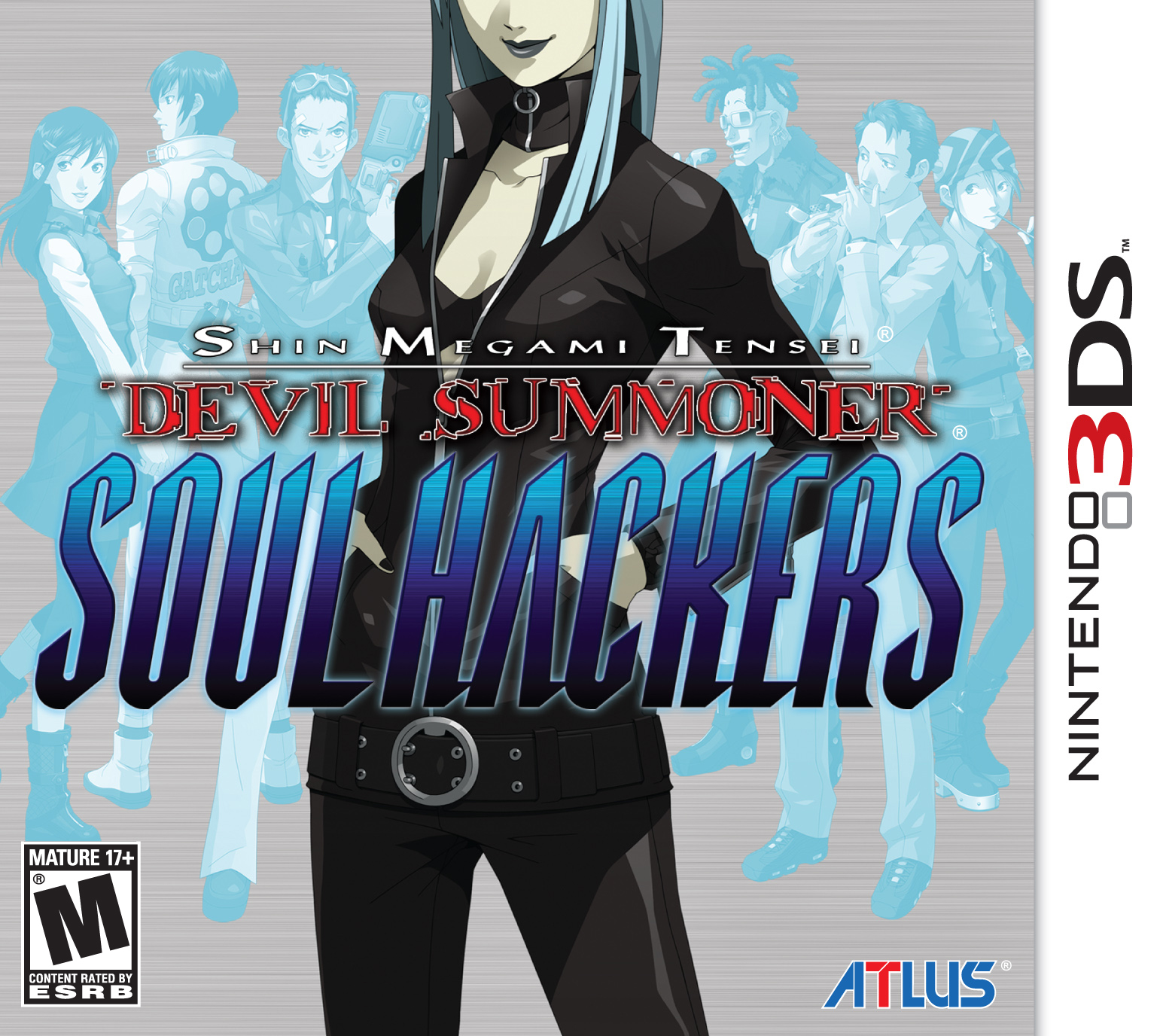
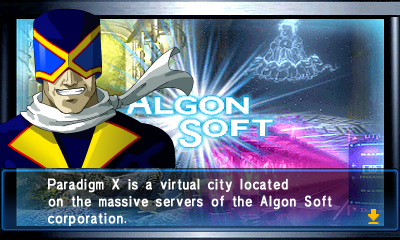


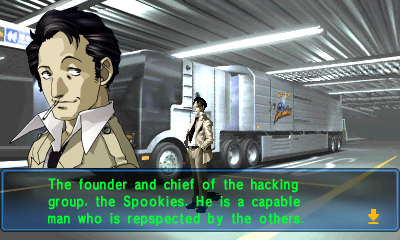


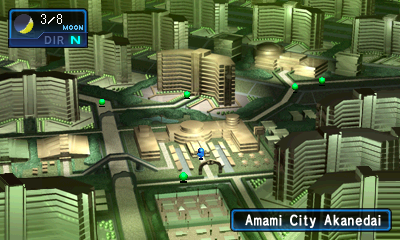
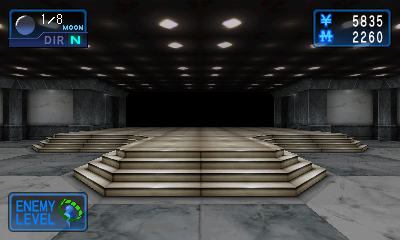
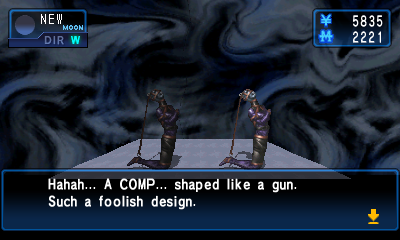
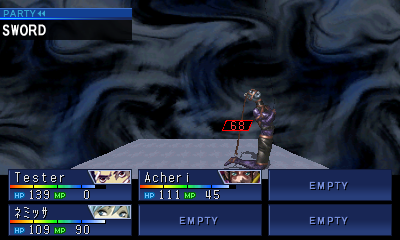
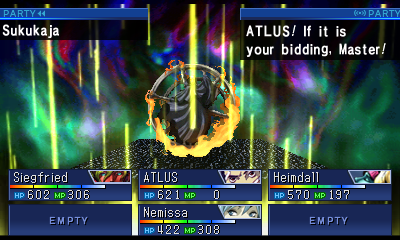
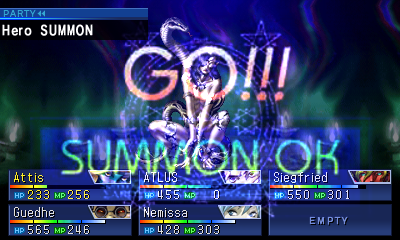
I think it needs more colons.
Funny that I’m now coming here for the game reviews as well as the superior Eotena Onslaught translation.
Thanks for this review, specifically. It helps.
Dominatah?
>I haven’t played any other RPG that lets the player speak with demons and convert them to your cause
>Immediately talks about Persona series
Play more Atlas games, Commie. Your lack of research is showing.
But those are Personas, not demons. I don’t recall speaking to my Personas either.
Your lack of reading comprehension is showing.
Personas technically speak to you when you fuse them in 3 and 4. But it’s not really a conversation.
>lack of research
>spells it “Atlas”
none of you play SMT: Strange Journey?
I have, and it sucks.
It’s a troll attempt.
A troll doesn’t present themself as a colossal retard. That would defeat the purpose of a troll.
I wouldn’t say play more Atlus games.
It’s more like play more Shin Megami Tensei games.
All of the main Shin Megami Tensei series entries allow you to talk to demons.
Persona and Persona 2 do as well, since the demons in those are demons before you convert them into personas.
>Soul Hackers requires you to talk to demons to get them to join you.
play Persona 2
The sound thing should be fixed by changing your 3DS’s audio from Surround to Stereo.
FYI, the music was composed by Toshiko Tasaki, Shoji Meguro, and Tsukasa Masuko.
Good review otherwise, but may want to research before giving Meguro all the credit. :P
I blame Wikipedia.